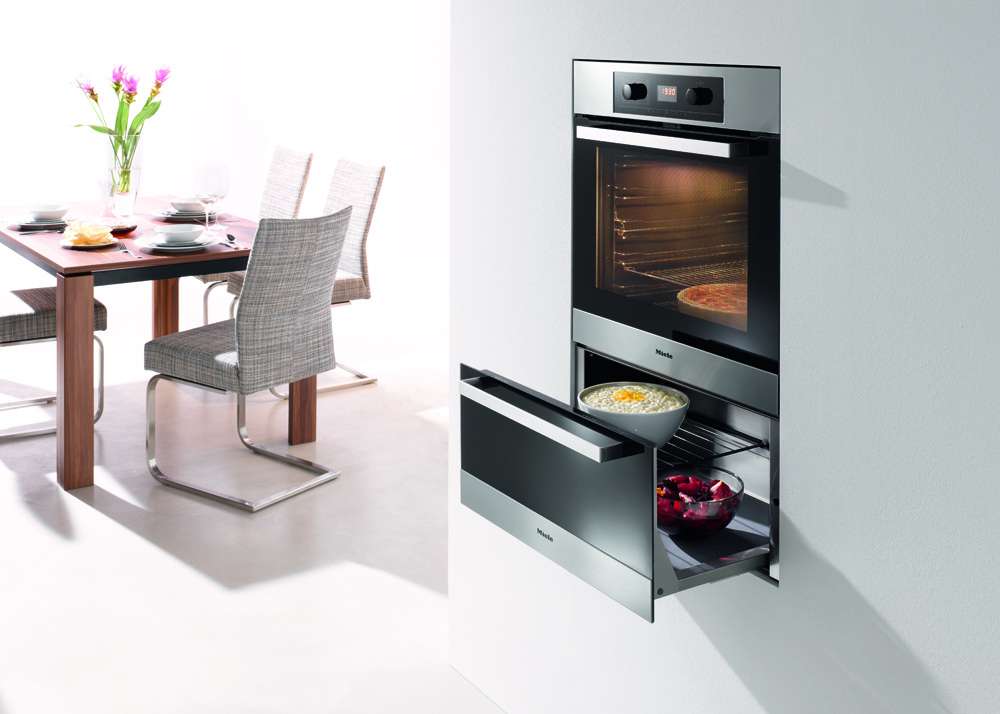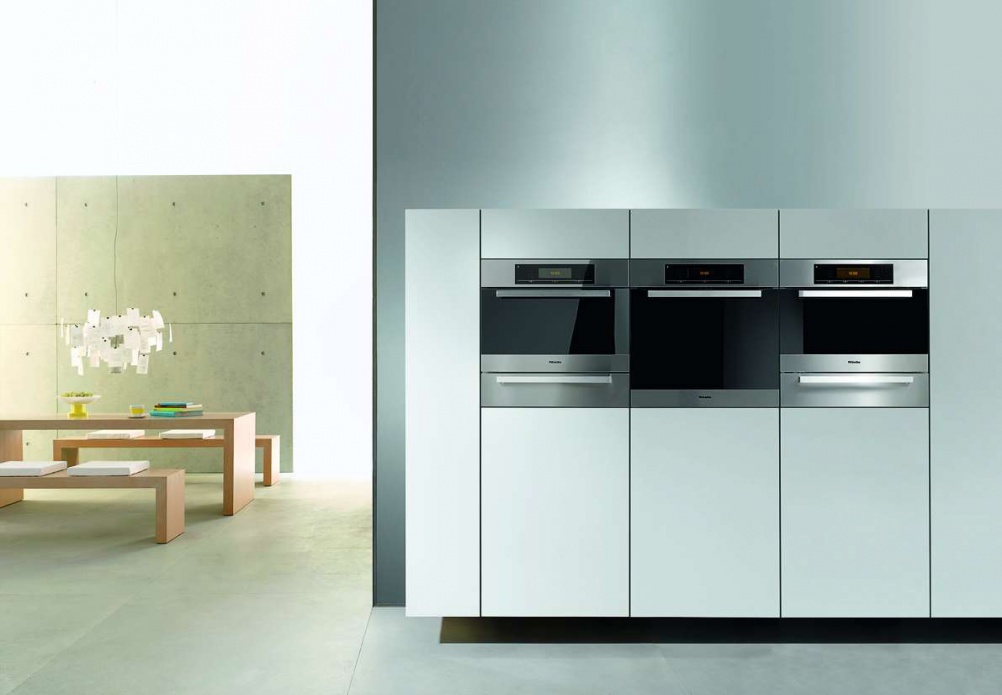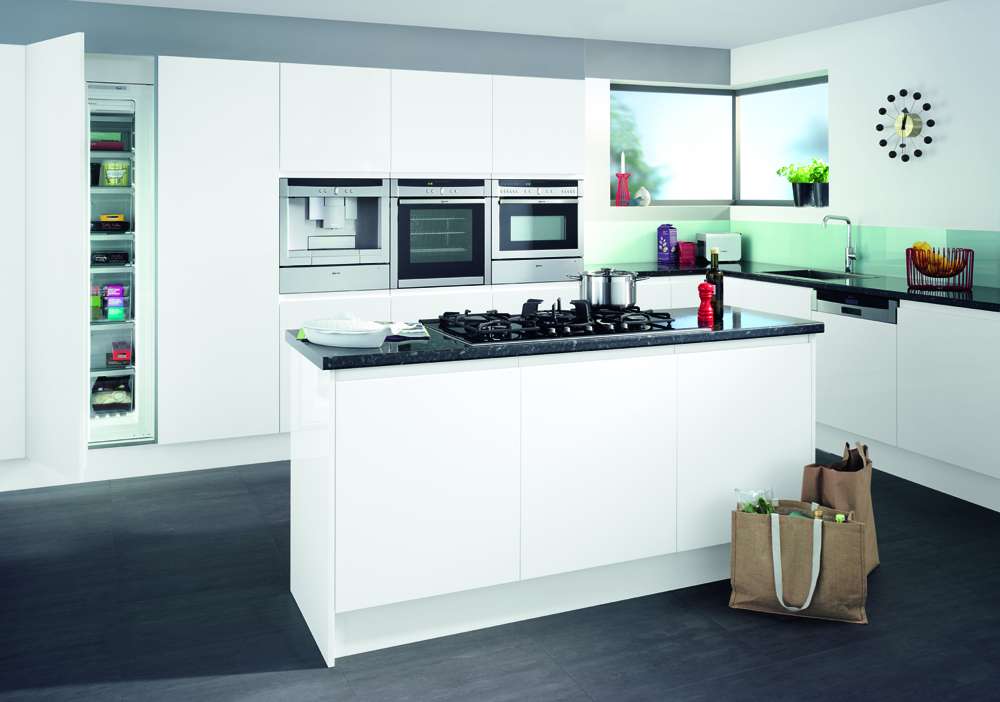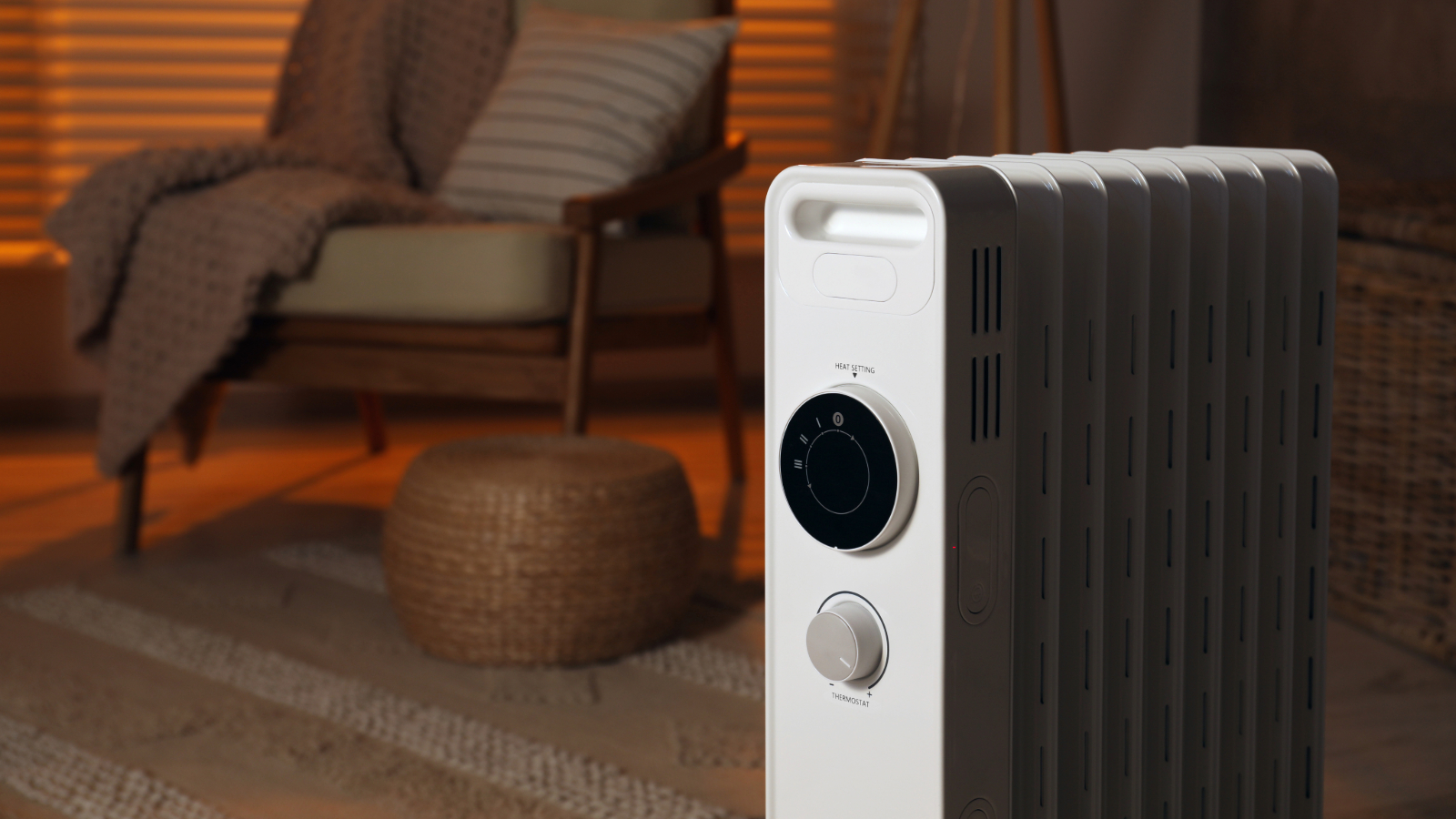The ultimate guide to built-in ovens
There’s nothing hotter in the kitchen right now than the built-in oven. Natasha Brinsmead explains why, and looks at how to buy one

Opting for a built-in oven instead of a free-standing model offers many benefits. One of the main advantages is that it can be positioned wherever you desire in your fitted kitchen, at a height that suits you, as opposed to a free-standing oven which will require you to bend down to carry food in and out from the low-level cavity. And, if, when designing a kitchen, you opt to have your oven fitted at eye level, it will also be out of the reach of curious toddlers.
Unlike free-standing cookers, which come as one unit with a hob included, built-in ovens require a separate hob, which again gives you flexibility in terms of your kitchen layout. The way that they slot neatly into units looks great and suits contemporary kitchens particularly well.
On the downside, the fact that oven and hob are separate can mean that you need a little more space to accommodate both, plus you cannot easily change your oven if you change your mind years down the line as easily as with free-standing. You will also have trouble taking it with you should you decide to move.

Gas or Electric?
You can trust Homebuilding & Renovating.
Whilst not everyone has the option of gas, this will not be a problem when finding a built-in oven as over 90% of the models on the market are electric. The main reason for this is that electric ovens tend to be easier to control and ensure that heat is distributed more evenly.

Single or Double?
Really this depends on your cooking needs and the size of your household.
If there are just one or two people in the household and you rarely entertain, then a single oven should suit you just fine, although the option of a separate grill is always useful. Otherwise, double ovens ensure you have choices, and also make cooking foods requiring different temperatures and timings easier — not to mention giving you space to keep food warm whilst the other oven is in use.
How Much Space Do They Need?
The majority of built-in ovens are 60cm wide – the same width as standard kitchen cupboards – although the cavity walls can vary slightly in thickness, so do compare capacities. Their height also varies. Single ovens are usually 60cm high, so can either be fitted underneath the worktop or at eye level within tall units. Double ovens designed to be fitted under the worktop are usually 72cm high, whereas those designed to be built in at eye level are more likely to be 90cm high.
All the Mod Cons

As with everything in the kitchen these days, there have been huge innovations in the world of built-in ovens and no longer do they just cook food like the ovens of old – just take a look at conventional vs convection ovens if you need any proof. There are now all sorts of features and optional extras to choose from.
Some of the favourites include programmes which do more than just sound an alarm when the food is ready, turning the oven off when it senses the food is cooked or about to burn.
One such model is the iQ700 from Siemens, which allows you to select a cooking program and enter the weight of the food, then automatically selects the best setting and calculates the exact cooking time, switching off when the meal is done, using residual heat to save energy.
Then there are those which clean themselves, such as the B15P42 from Neff, which is a Pyrolytic oven that superheats to 500°C to burn off any deposits. This leaves a residue of fine ash which can be wiped away with a damp cloth. Neff also offers ovens with CircoTherm® Intensive, which is ideal for foods that benefit from a crispy underside, such as pizzas and pastry, offering a top and bottom heat. To make life even easier, look out for ovens which feature telescopic shelves, allowing you to pull them right out without them actually falling out — Miele offers a number of these ovens with its FlexiClip function. Finally, most suppliers offer ovens with child safety locks — perfect for those worried about young children.
Who Should Install It?
Built-in ovens will often be installed by your kitchen supplier if bought as part of a fitted kitchen from a specialist. Otherwise you will need an electrician or a Gas Safe-registered engineer, depending on your fuel type
In England and Wales, if you are connecting your new oven to an existing cooker socket, you will not have to have any kind of approval, but if you are installing a new power socket for the oven, Part P of the Building Regulations will apply and you should notify the Building Control office of your local authority, unless the work is carried out by a ‘competent’ electrician, who is able to self-certify that the work has been carried out correctly.
Bring your dream home to life with expert advice, how to guides and design inspiration. Sign up for our newsletter and get two free tickets to a Homebuilding & Renovating Show near you.
Natasha was Homebuilding & Renovating’s Associate Content Editor and was a member of the Homebuilding team for over two decades. In her role on Homebuilding & Renovating she imparted her knowledge on a wide range of renovation topics, from window condensation to renovating bathrooms, to removing walls and adding an extension. She continues to write for Homebuilding on these topics, and more. An experienced journalist and renovation expert, she also writes for a number of other homes titles, including Homes & Gardens and Ideal Homes. Over the years Natasha has renovated and carried out a side extension to a Victorian terrace. She is currently living in the rural Edwardian cottage she renovated and extended on a largely DIY basis, living on site for the duration of the project.

